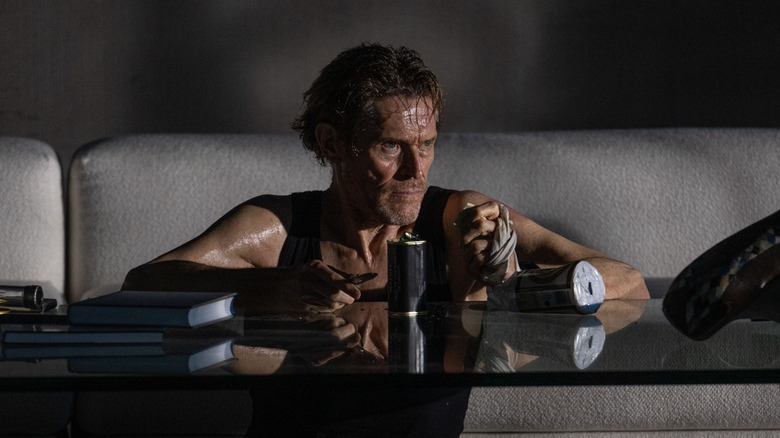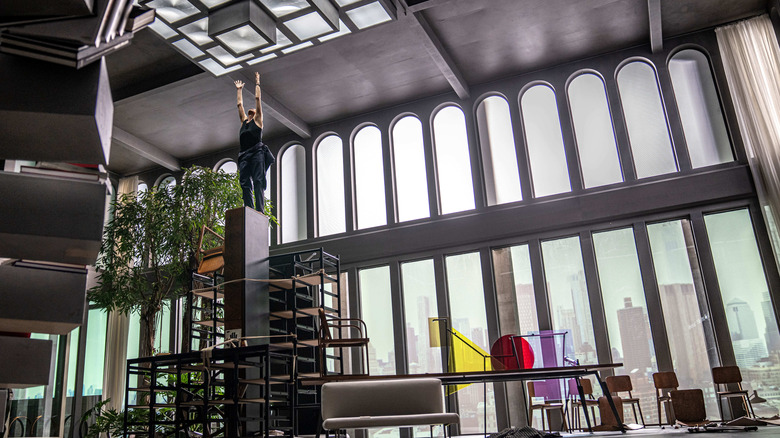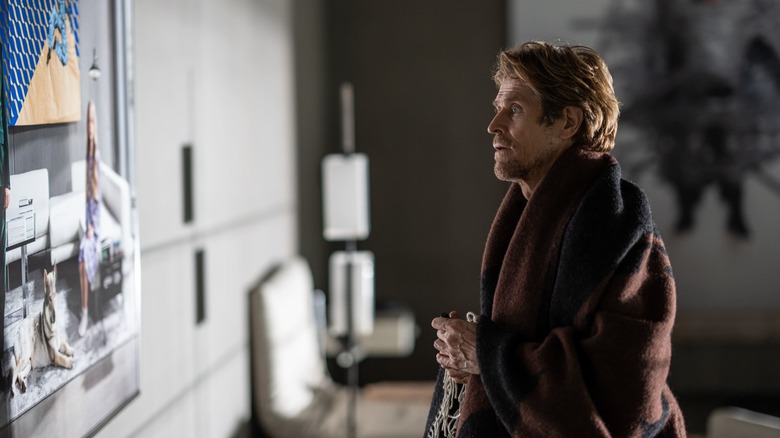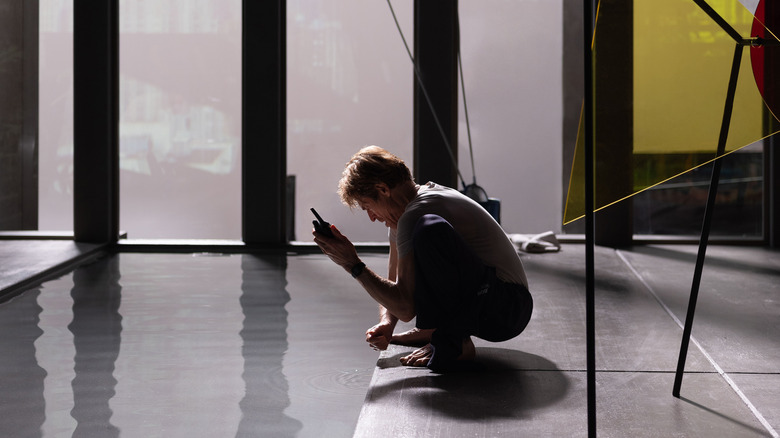Inside Review: A Self-Contained Nightmare Of Class Conflict
- Strong performance from Willem Dafoe
- Incredible production design
- Occasionally repetitive narrative
It's the most basic of narrative devices: man versus his environment. "Inside," which premiered at Berlin International Film Festival, takes the simple premise of a thief trapped inside a home he intends to rob and creates a story rich with contrasts as we see the hostile world built by the ultra-wealthy, one that threatens the very survival of our ersatz hero. Willem Dafoe, as the anchor of an extremely small cast, carries the film on his shoulders, keeping us invested throughout despite having very little to say. This may be Vasilis Katsoupis' directorial debut, but it reflects the maturity and confidence of a much more experienced filmmaker.
Nemo (Dafoe) breaks into an ostentatious penthouse suite looking for something to steal, but make no mistake: He's no petty thief. He has his eye on a series of paintings, works that he genuinely appreciates for their artistic value. But although the beginning of his operation goes smoothly — he has no trouble getting into the apartment — things quickly take a turn when an alarm is triggered and the state-of-the-art security system turns the height of luxury into an impenetrable fortress. Every door is locked, and every window is made of thick, bullet-proof glass. Oh, and in his haste to find a way out, he accidentally breaks the thermostat, and the temperature begins to rise.
A hostile space
The subtlety of "Inside" is practically nonexistent. The wealthy elite, as represented by the owner of this outlandishly opulent penthouse, create an environment that is inhospitable to the humble thief in every way. The air conditioning and central heating, designed as a luxurious feature to pamper the occupant by keeping them within an exact degree or two of optimal comfort, wreak havoc on Nemo's system, freezing him one moment and giving him heat stroke the next.
The high-tech smart fridge plays "Macarena" whenever the door is left open for too long, driving Nemo to the brink of madness, and although the food it contains within is all luxurious — caviar is featured extensively — none of it is actually practical as sustenance. The only water available in the entire apartment is in the small aquatic feature and the indoor garden for plants — not exactly useful for maintaining human life, at least until Nemo is able to rig a system to salvage some of it for his own needs. Essentially, everything in this apartment that represents affluence and grandeur is turned against Nemo, making it that much harder for him to survive. A gorgeous penthouse apartment, or a harsh landscape unfit for human habitation — who's to say?
The power of Willem Dafoe
The premise of "Inside" is a solid one, but it's also fair to say that there is no way on Earth that this film would work quite as well as it does without Willem Dafoe in the lead role. Indeed, it's difficult to think of another actor who could handle this much alone time on screen and keep it interesting. He sits perennially on the verge of madness the longer that he spends trapped in this apartment, attempting to cling to vestiges of humanity even as he begins to lose hope.
He pretends to be the host of a cooking show as he prepares his meager portions with the scraps he is able to find around the apartment. He watches security footage of the employees who work elsewhere in the building — especially Jasmine, the maid whose earbuds and vacuum prevent her from hearing Nemo's pleas for rescue — as though they're the most engrossing soap opera he's ever seen. His survivalist plans seem logical, clever even, in the beginning, but as his situation becomes direr it grows difficult to ignore the feeling that he's simply staving off the inevitable. His eccentricities become more pronounced, and he vacillates between high spirits and moroseness throughout the film. Dafoe's unique screen presence carries the weight of "Inside."
Brutal minimalism
There are moments in "Inside" that feel repetitive: We realize fairly early on where this is all headed, and despite the creativity Katsoupis displays in his efforts to invent new problems for Nemo, it begins to lose its novelty after a while. Still, this is overcome by the film's pitch-perfect production design. Never has a sparsely decorated, modernist penthouse felt quite so foreboding and unwelcoming. (It's no coincidence that the windows make the room look like a prison.) Everything is so pared down, visually and from a performance perspective, that there's nowhere to hide. The fact that "Inside" is riveting for the majority of its runtime is a testament to the space itself, and how well Dafoe functions within it.
With the power of Dafoe working at his most off-kilter, it brings to life a harrowing story that is as much a traditional thriller as it is a treatise on class conflict. Throughout the film, we never lose sight of the fascinating contrast between what this apartment was designed to be, and what it becomes. The hostility of the space is relentless, as Dafoe finds himself trapped in an incredibly bougie nightmare. Self-contained, clever, and consistently engaging, "Inside" generates an intensity that belies its simple premise.
"Inside" is now playing in limited theaters.



